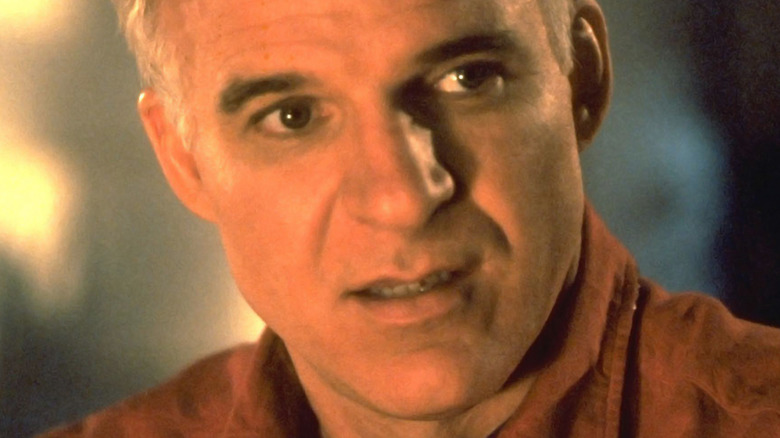Twitter Turns To Father Of The Bride To See How Hollywood's Portrayal Of Middle Age Has Changed
Trends in Hollywood are always changing. From the modern dominance of blockbuster genre franchises like "Star Wars" and the MCU, to the ongoing battle for more equitable casting, to the growing role of streaming as a release venue, the movie landscape of today looks a lot different than it did a few decades ago. Recently, film fans took to Twitter to discuss another major change — a shift in how middle-aged people are portrayed on the big screen, as exemplified by the 1990s "Father of the Bride" films.
There was a time when certain milestones were more expected of adults in their 40s — marriage, home ownership, parenthood, and a nice stock portfolio. While the cultural pressure to achieve these things certainly remains, the increased challenges of buying a house (via Washington Post) and other societal shifts have altered this generation's perception of what it means to be middle-aged. That shift has been reflected in Hollywood as well. Long gone are the Ward Cleaver days of identically stodgy film and TV fathers, replaced by an era where comedies like "Bridesmaids" and "The 40-Year-Old Virgin" thrive.
It wasn't all that long ago, though, that middle-aged characters were expected to be presented strictly as prim and proper adults. All it takes is a glance back at "Father of the Bride" to see how much has changed.
Father of the Bride's leading couple hasn't aged well
Upon rewatching 1995's "Father of the Bride Part II," screenwriter Jessica Ellis took to Twitter with a screenshot of Steve Martin – who's been in more movies than some can remember — and Diane Keaton's characters sitting on a couch. "An unbelievable thing that has changed in 30 years is that in 1995, this was supposed to be what 45-years-old looked like," Ellis wrote over the photo, which shows Martin in a stiffly tailored suit and tie and Keaton in a high-necked blouse and sweater combo with pearls. The tweet has since been viewed over 6 million times and accrued over 5,000 retweets.
Both characters are meant to be in their mid-to-late-40s in the film. While that is accurate for both Martin and Keaton at the time, Ellis points out that it's their styling that stands out today. "The 'ideal' was to be a person in old lady twinsets and pearls *by your 40s* [sic]," Ellis wrote in a follow-up tweet.
Ellis makes a salient point about the specific ways middle-aged characters were and weren't allowed to present for so long in Hollywood. A simple glance at the many responses to the tweet shows how dated this kind of presentation feels today. As Twitter user @theburbanist expressed in a reply, some of that is surely due to the ever-changing nature of fashion. It also speaks volumes about how much more open stories starring middle-aged characters have become in recent years.

